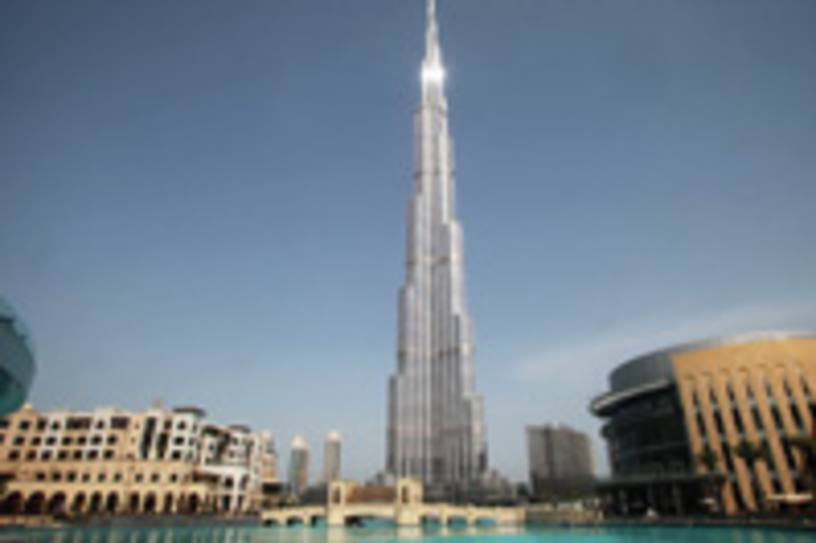The United Arab Emirates' economy enjoyed muted growth in 2010 and continues to experience slow yet steady expansion. As the global financial environment starts to recover and oil prices return to normal levels, the Emirates’ economy is starting to mirror that of the rest of the world.
According to the International Monetary Fund (IMF), the overall economy of the UAE is expected to experience more pronounced growth in 2011. Overall, inflation in the UAE in 2010 varied from emirate to emirate. Ajman was the emirate that witnessed the highest inflation increase for the year - 8.5% - while the lowest rise was Fujairah's 2%. IMF projections expect the average inflation figure for the entire federation to oscillate by about 2.5% over the next year.
Regarding the cost of living, property prices have dipped considerably since 2008. This is seen as an incentive to the ‘human capital’ Dubai lost during the crisis to return. According to local bankers such as Rick Pudner, chief executive officer of Emirates NBD - will the better news will “cause those who left to [consider] returning when all these fundamentals are weighed into the balance”.
Oil drives growth
Along with the financial crisis, the UAE experienced added distress as a result of falling oil prices, which led to a 40% loss in hydrocarbon-related revenues at the height of the crisis. However, during 2010 crude oil prices rebounded so that by February this year crude was trading at about $100 a barrel.
Based on IMF estimates, the rise in oil prices is expected to increase hydrocarbon revenues for 2011 by 29%. Given that Abu Dhabi is responsible for more than 90% of the UAE’s oil production, it is said to form the backbone of the financial strength of the federation.
Dubai World crisis
Elsewhere in the UAE, Dubai - the country's flagship emirate - found its image seriously dented as a result of the debt crisis experienced by the government-owned holding company Dubai World. The Dubai state-owned investment vehicle announced in November 2009 that it would require a standstill agreement from all its creditors for its $26bn debt.
In September 2010, though, Dubai World said it had reached a restructuring agreement with all of its creditors. The organisation restructured its debt with a bond issuance from the government of Dubai. Elsewhere, Dubai-based real estate giant Emaar Properties raised $500m from a bond sale in a bid to secure funds to settle debts and fund projects outside the emirate. Deals such as these two have boosted the economy of the UAE and demonstrated “strong investor appetite”, according to a statement issued by Dubai's government.
Indeed, Dubai is today experiencing positive signs across various sections of its economy, thanks in no small part to support from Abu Dhabi. Mohamed Nasr Abdeen, chief executive officer of the Union National Bank, describes Abu Dhabi’s role as being key to the financial wellbeing of the rest of the UAE. “You cannot dream of a better brother [to Dubai]," he says. "Its recovery owes a lot to Abu Dhabi’s willingness to support it and the strong fundamentals which Abu Dhabi’s economy rests upon.”
In its third quarter 2010 report on the area, Moody’s described the outlook for the UAE as "stable" - and Abu Dhabi is key to its assessment. This outlook is based on Moody’s assumption that the government of Abu Dhabi - the richest of the seven emirates that comprise the UAE - stands fully behind the Dubai federal government, the report says. Abu Dhabi’s sovereign ratings are supported by the emirate's very high gross domestic product per capita figures that are, in turn, supported by abundant hydrocarbon resources and a very strong public sector balance sheet.
However, despite boasting good all-round figures, prolonged periods of low oil prices could seriously impede Abu Dhabi’s economic outlook. In terms of financial infrastructure, the UAE knows it will have to think radically if it wants to improve and upgrade this potential engine for growth. Regional stock exchanges, for example, will need to undergo a radical shake-up should the country wish to use them as a major capital raising platform to continue fostering growth.
Capital markets
There are three stock exchanges in the UAE: Abu Dhabi Stock Exchange (ADX), Dubai Financial Market (DFM) and Nasdaq Dubai. Bankers have remarked on the low levels of liquidity in the country that have only decreased since the crisis. They believe little can be done until a common policy is agreed upon. Most talk of the need to consolidate the bourses as a first step to boost liquidity. As for initial public offerings (IPOs), very few are expected to be launched in the next 12 months.
“Many companies are ripe for IPOs but investor confidence is still not high enough to push for companies going public,” says Omar Mehanna, the head of advisory for the Middle East and north Africa at HSBC. Accurate evaluation of capital needs and pricing remains difficult to assess and so little is happening in the way of public offerings. There were talks during the past year of ADX merging with DFM and government officials are still considering the idea, according to reports in the local press. The Emirates Securities and Commodities Authority believes the move would boost liquidity in the markets and lead to significant growth.












